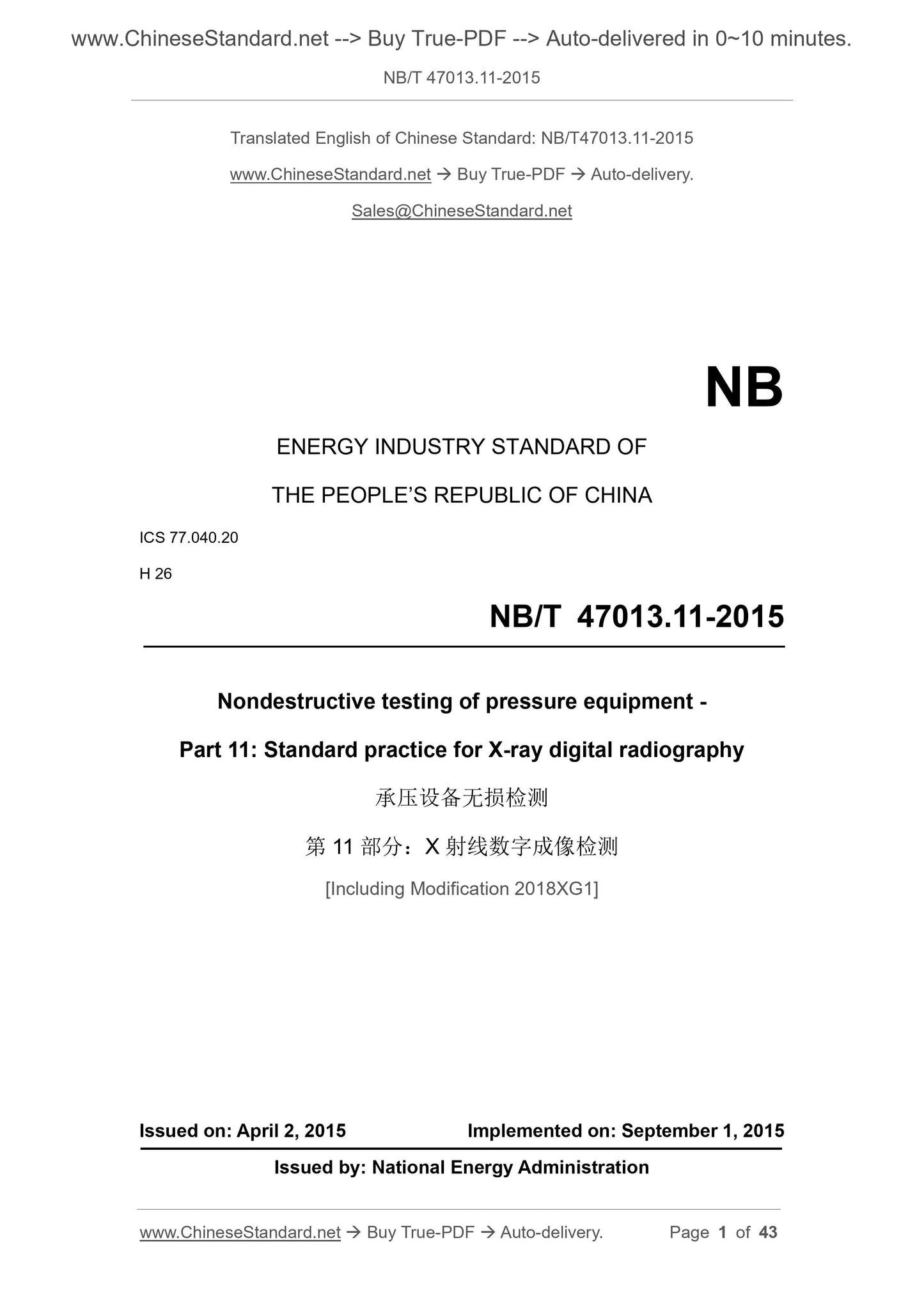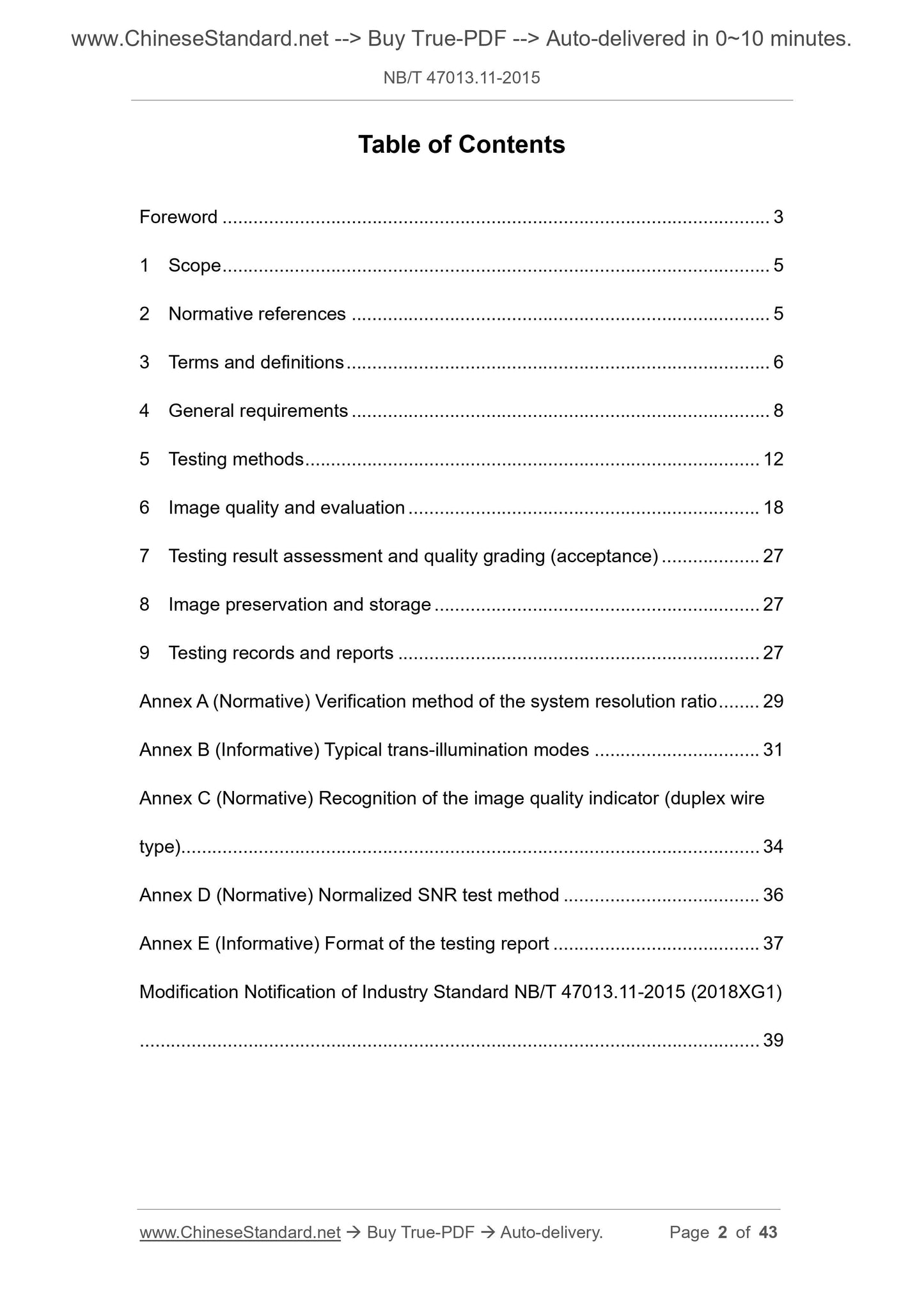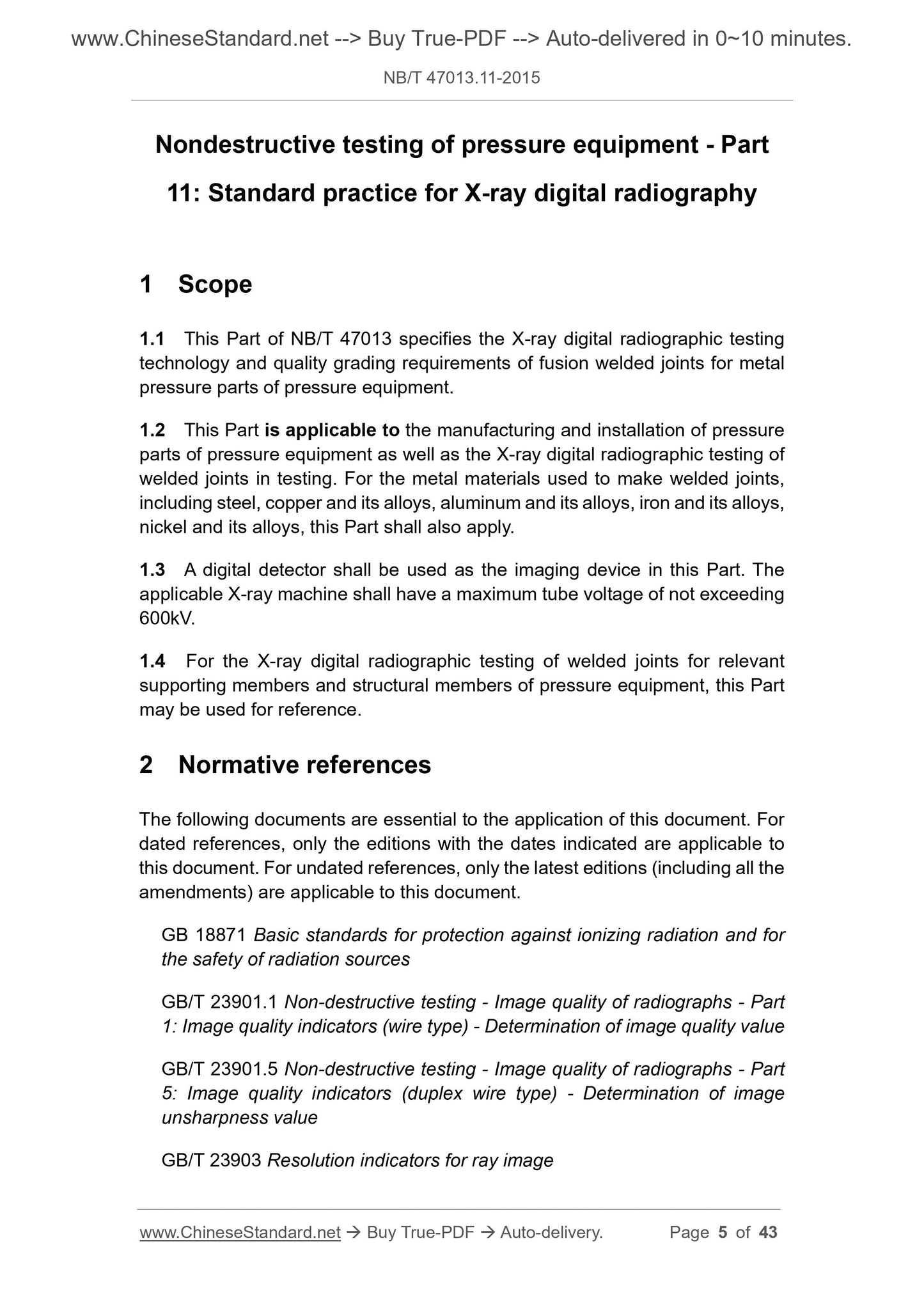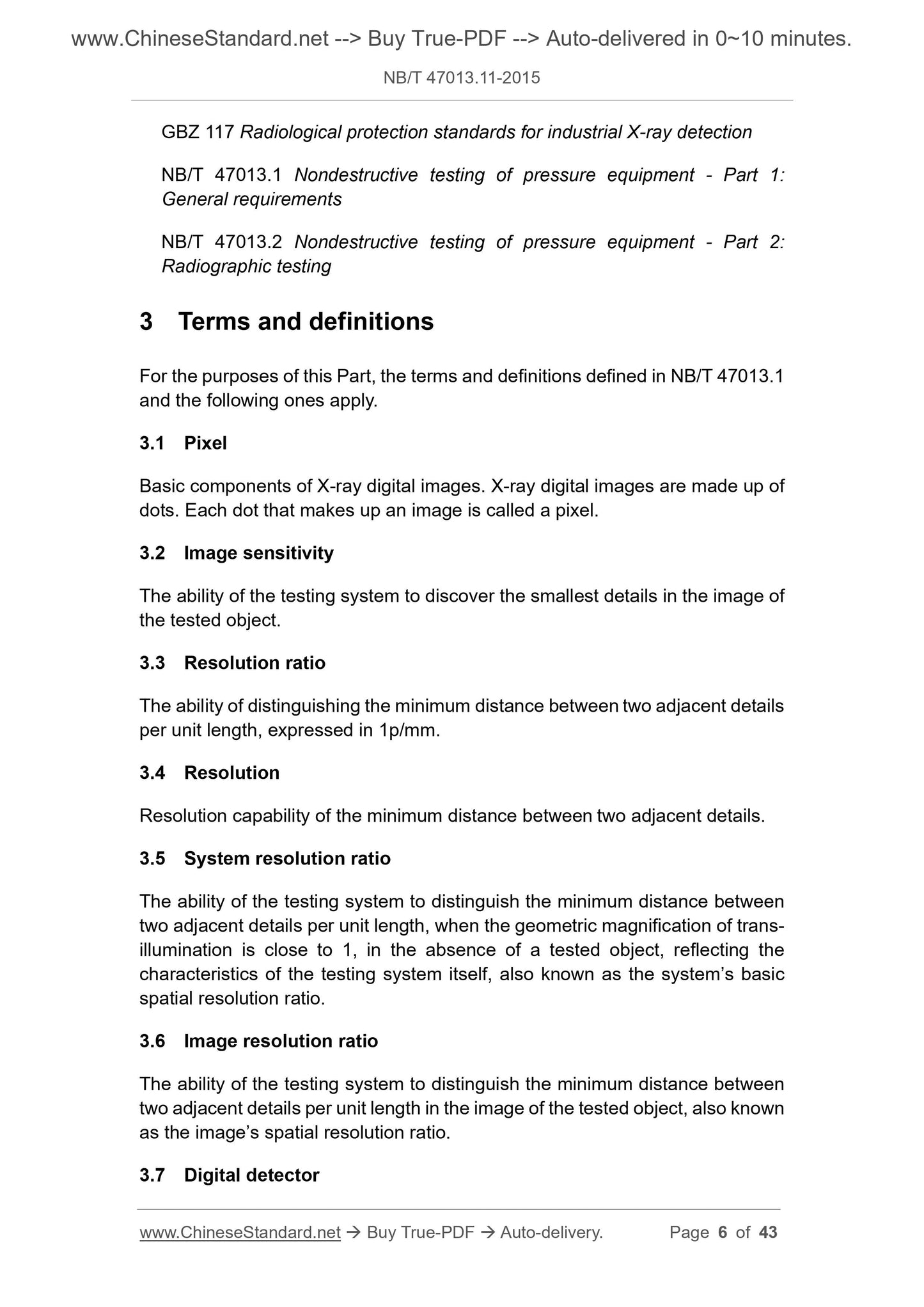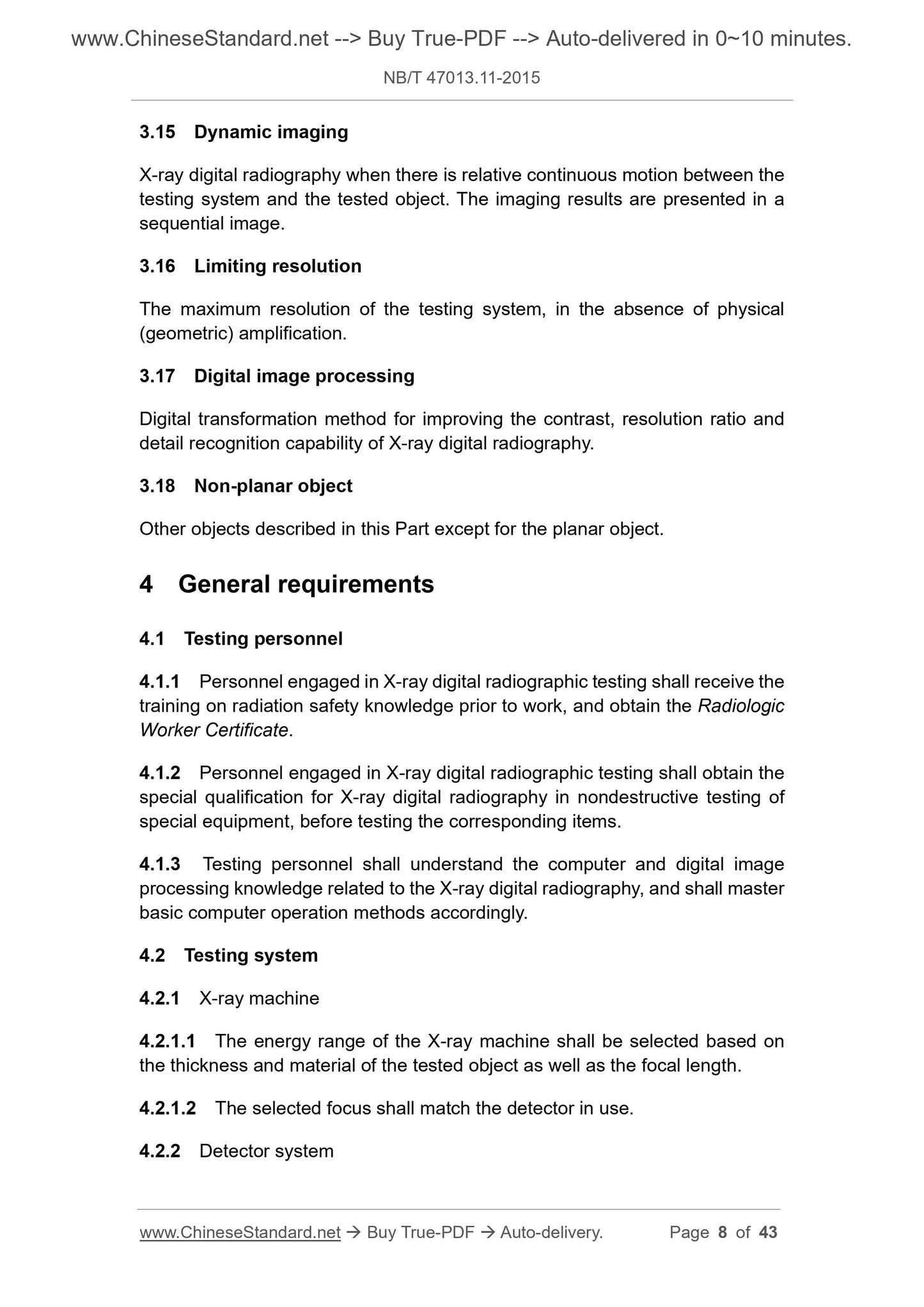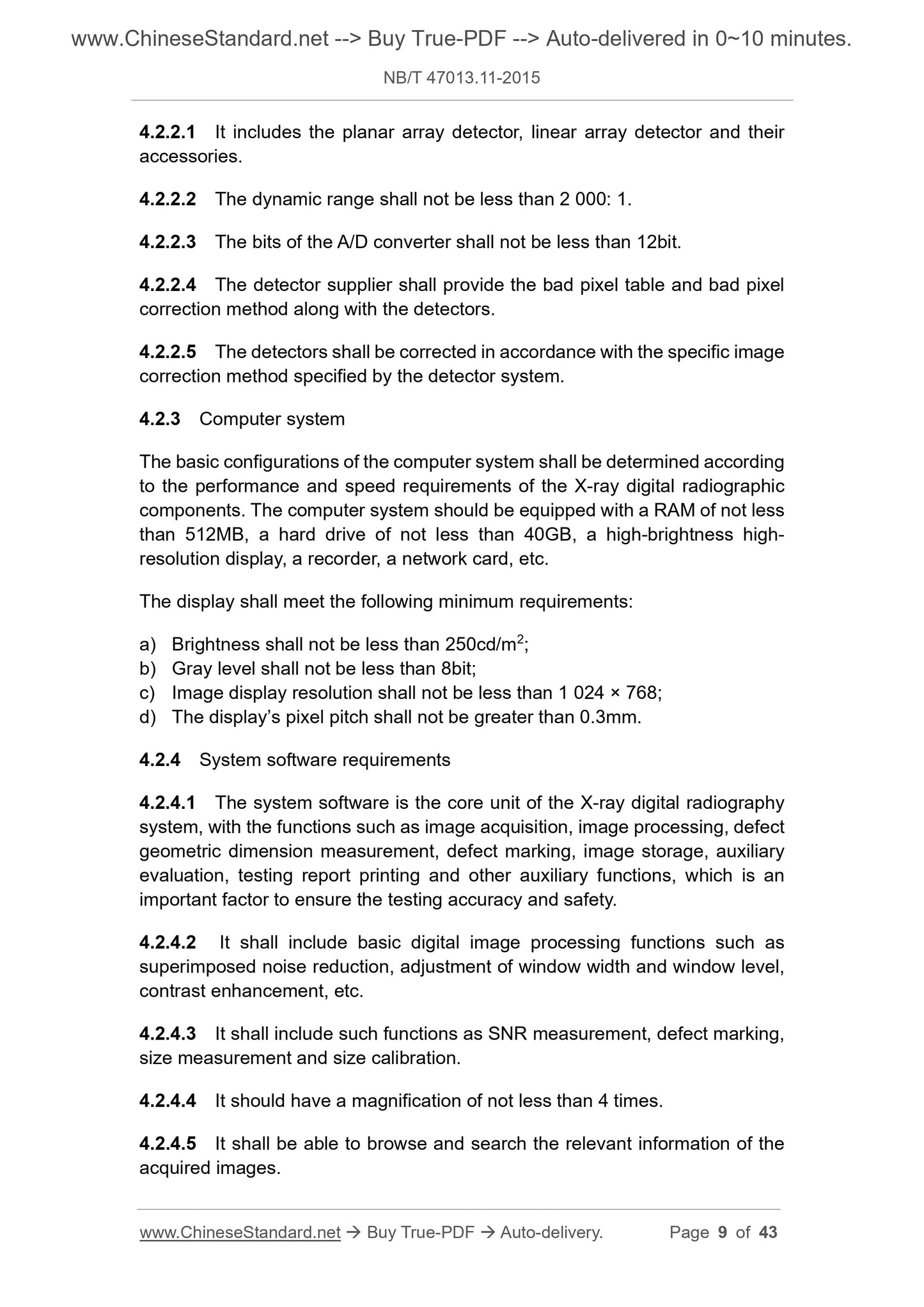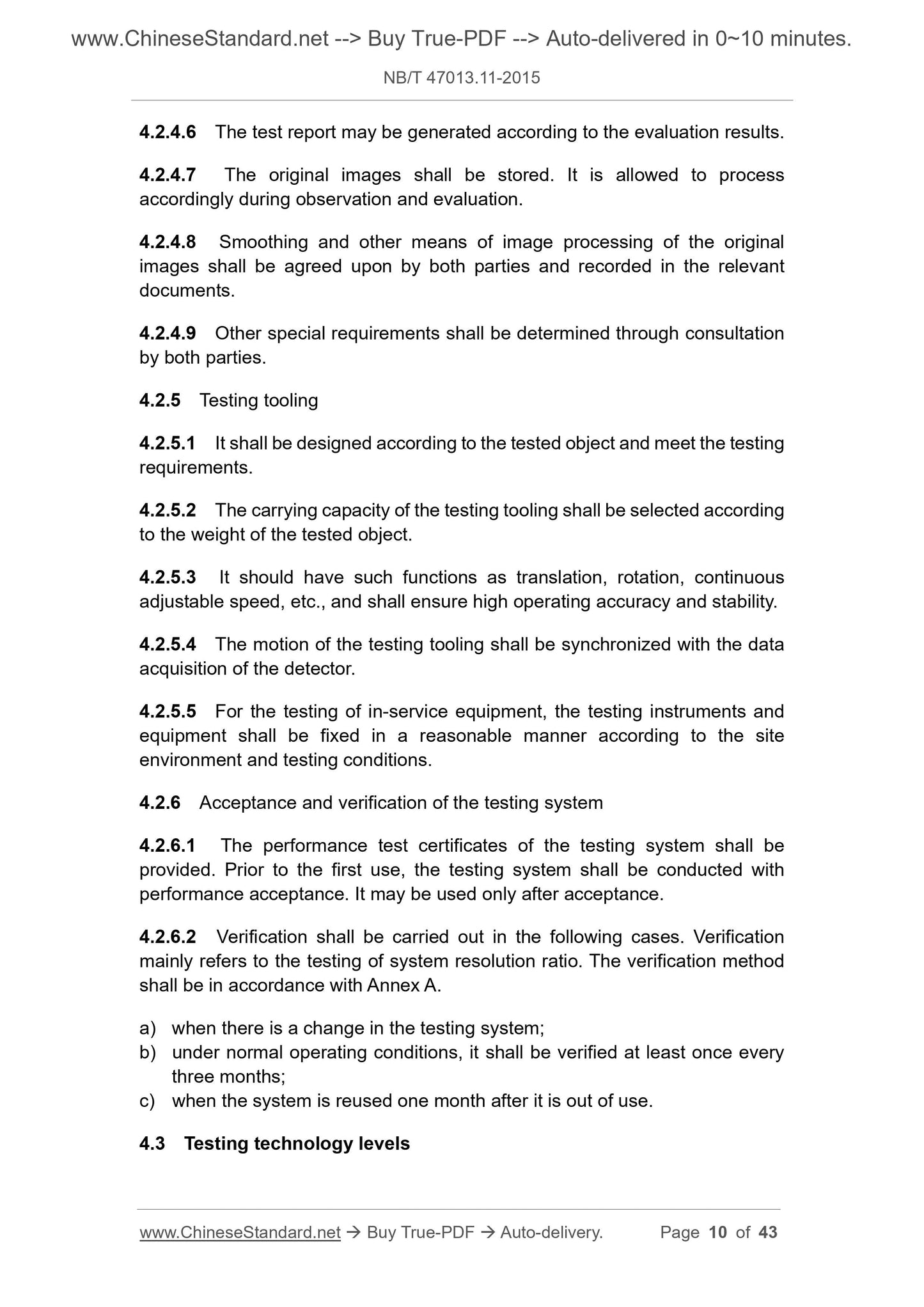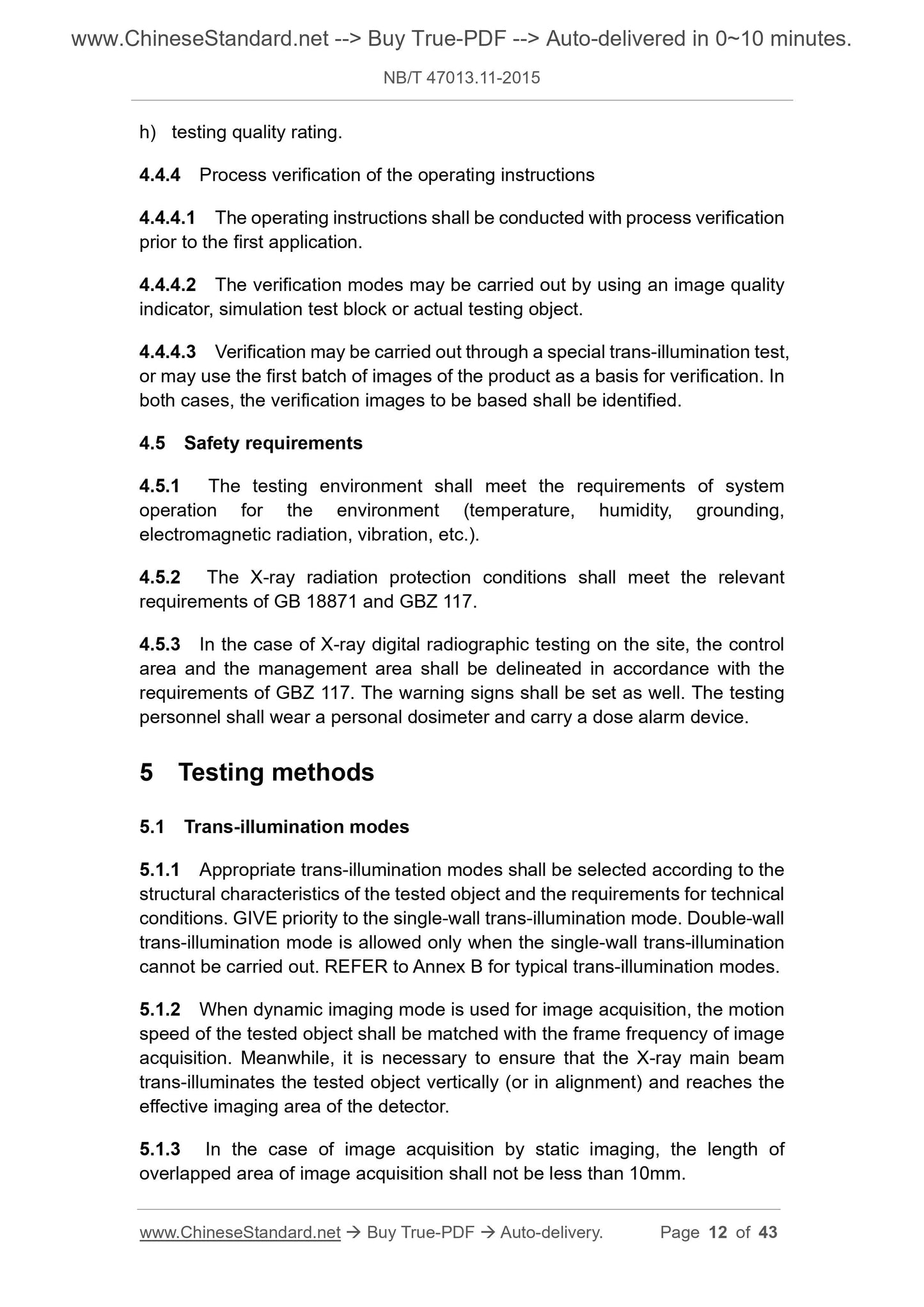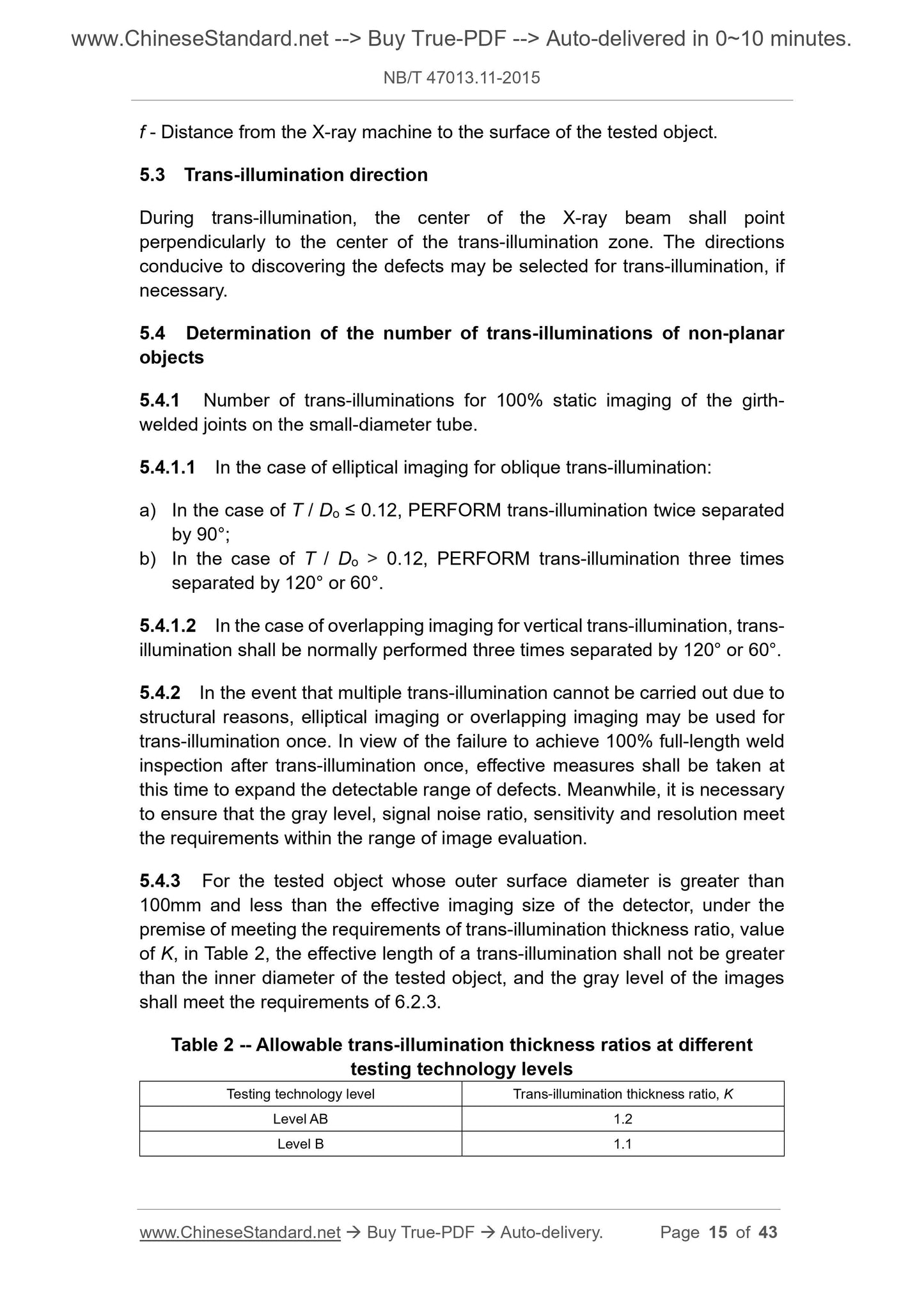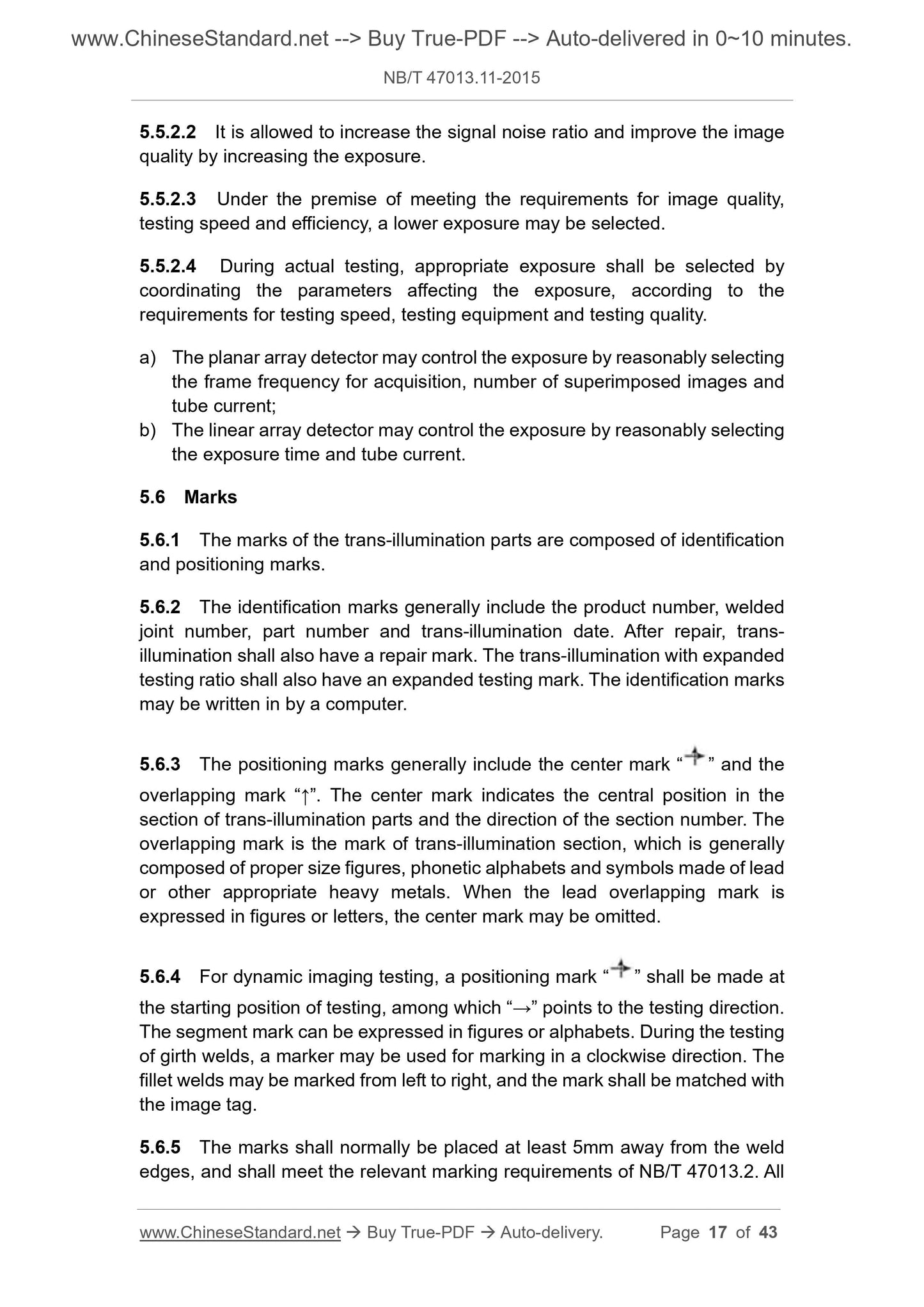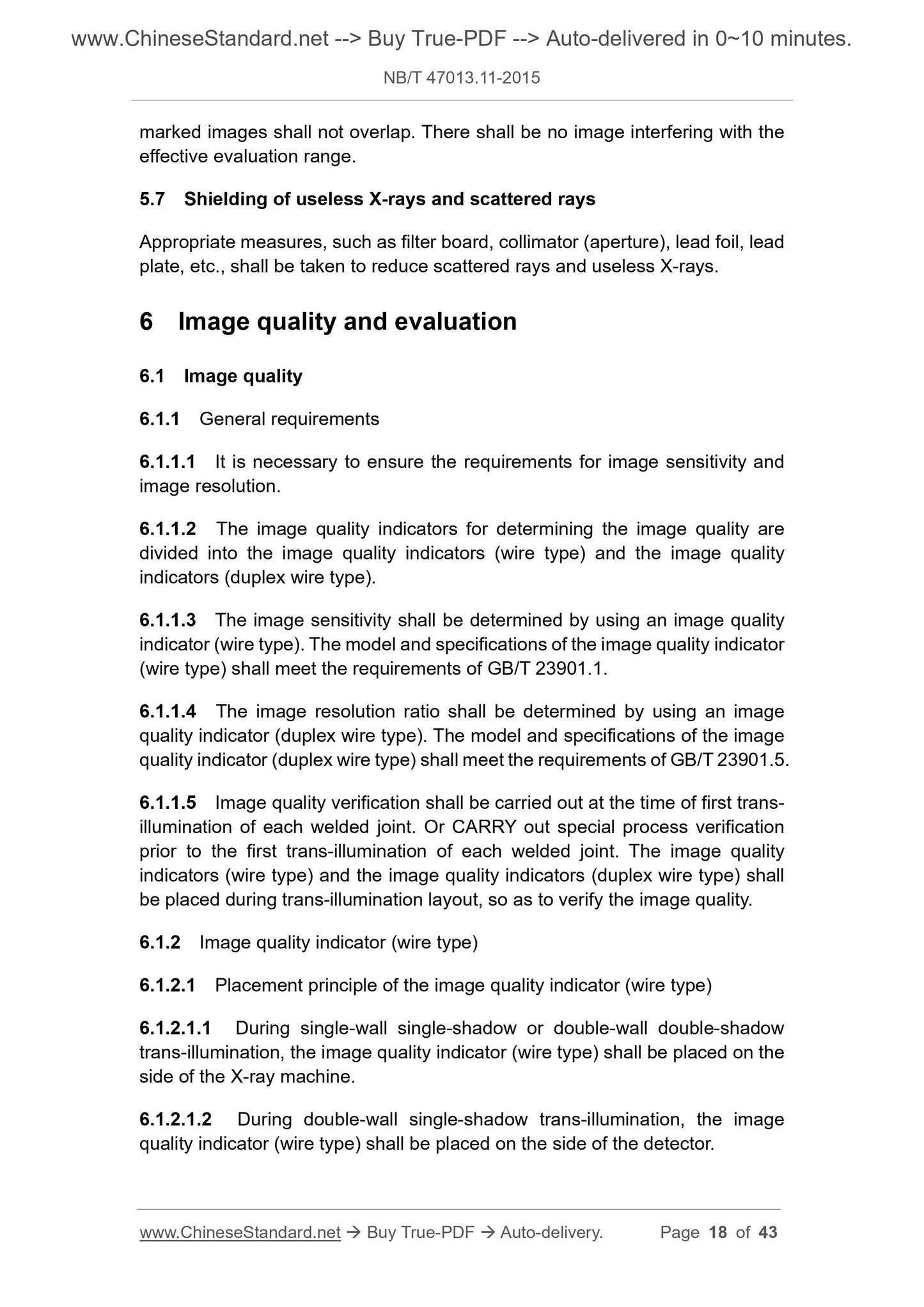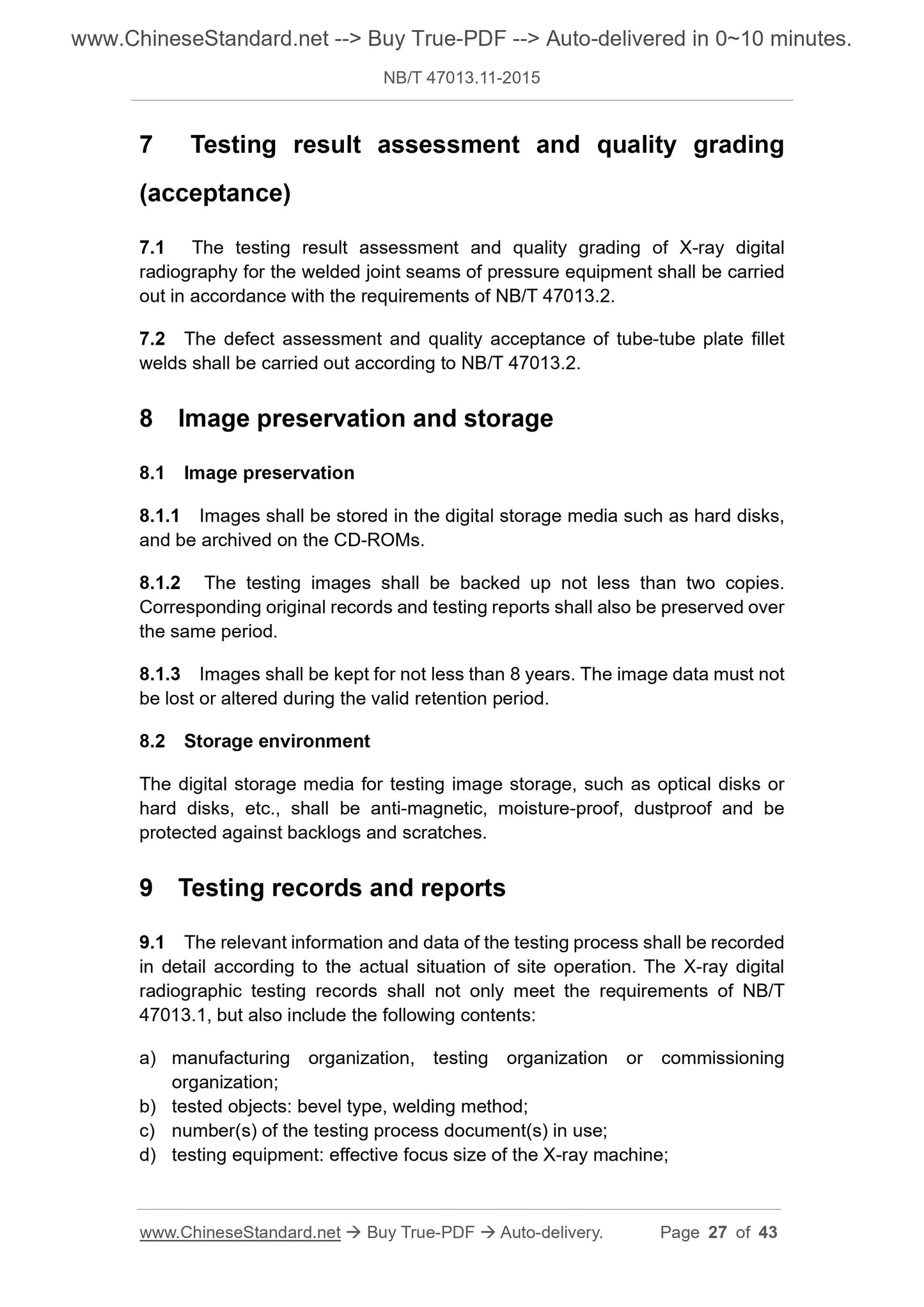1
/
of
12
PayPal, credit cards. Download editable-PDF and invoice in 1 second!
NB/T 47013.11-2015 English PDF (NB/T47013.11-2015)
NB/T 47013.11-2015 English PDF (NB/T47013.11-2015)
Regular price
$155.00
Regular price
Sale price
$155.00
Unit price
/
per
Shipping calculated at checkout.
Couldn't load pickup availability
NB/T 47013.11-2015: Nondestructive testing of pressure equipments - Part 11: Standard practice for X-ray digital radiography [Including 2018XG1]
Delivery: 9 seconds. Download (and Email) true-PDF + Invoice.Get Quotation: Click NB/T 47013.11-2015 (Self-service in 1-minute)
Newer / historical versions: NB/T 47013.11-2015
Preview True-PDF
Scope
1.1 This Part of NB/T 47013 specifies the X-ray digital radiographic testingtechnology and quality grading requirements of fusion welded joints for metal
pressure parts of pressure equipment.
1.2 This Part is applicable to the manufacturing and installation of pressure
parts of pressure equipment as well as the X-ray digital radiographic testing of
welded joints in testing. For the metal materials used to make welded joints,
including steel, copper and its alloys, aluminum and its alloys, iron and its alloys,
nickel and its alloys, this Part shall also apply.
1.3 A digital detector shall be used as the imaging device in this Part. The
applicable X-ray machine shall have a maximum tube voltage of not exceeding
600kV.
1.4 For the X-ray digital radiographic testing of welded joints for relevant
supporting members and structural members of pressure equipment, this Part
may be used for reference.
Basic Data
| Standard ID | NB/T 47013.11-2015 (NB/T47013.11-2015) |
| Description (Translated English) | Nondestructive testing of pressure equipments - Part 11: Standard practice for X-ray digital radiography [Including 2018XG1] |
| Sector / Industry | Energy Industry Standard (Recommended) |
| Classification of Chinese Standard | H26 |
| Word Count Estimation | 26,258 |
| Date of Issue | 2015-04-02 |
| Date of Implementation | 2015-09-01 |
| Regulation (derived from) | ?Energy Bureau Announcement 2015 No. 3 |
| Issuing agency(ies) | National Energy Administration |
Share
